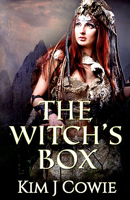|
||||||
Back | Anime titles | anime in romaji order | Shoujo | W.M.T | Old Anime | Manga titles | Blog Home
| Information | |
| Title (English) | Mermaid Melody |
| Title (Japanese) | Mermaid Melody - Pichi Pichi Pitch | Advertising Fantasy Novel |

|
| Notes | |
| Classification | shoujo |
| Synopsis | Mermaid idol singers. |
| Review | My friend taped the second episode of the new TV Tokyo/TV Aichi mahou
shoujo series, "Mermaid Melody - Pichi Pichi Pitch", which is on Saturday
mornings just before "Mirumo de Pon". "Pichi Pichi Pitch" is based upon a
Nakayoshi manga story. So although I didn't see the opening episode, by
reading the notes on the TV Aichi page, and with a reasonable idea of the
story line and what usually goes on in similar mahou shoujo series, it
wasn't hard to catch up on what was happening.
"Pichi Pichi Pitch" is loosely based upon the old Hans Christian Anderson version of the "Little Mermaid" tale, about the mermaid who transforms into a human and falls in love with a human boy. In the case of "Pichi Pichi Pitch", the old 1950's movie "Three Coins in the Fountain" is sort of mixed in to the plot as three mermaid princesses come to land to learn about the human world through attending middle school and trying to be idol singers. The main heroine is Lucia, the blond mermaid, who has an obligatory obnoxious "cute" sidekick called Hippo ( who looks like a failed cross between a penguin and a blue bird ) who is there to warn her not to do things that are fun. In the second episode the blue-haired mermaid Hanon is already in place and the green-haired mermaid Lina is about to enter the story line. Lucia has already developed a crush on red-haired Kaito, a human boy she rescued in the first episode. Kaito was entranced by Lucia's mermaid form and magical voice, but doesn't realize that the legged version of Lucia is the same as the mermaid version. Lucia has been told that if she "falls in love" with Kaito she will turn into sea foam, but she doesn't care and doesn't quite believe it anyway. So, for example, she jumps at the opportunity to go to the Spring Festival with him. There is also an enemy who is trying to stop the mermaid girls, on land or at sea, and the girls fight back by turning into idol singers and blasting their enemies with songs. So what we have here is a variation on the tried and true formula that has sold billions of Yen worth of girl-toys for years. (Most of the ads during the show were for kareoke microphones for little girls to sing into like the magic microphones that the mermaid girls use.) All the standard mahou shoujo cliches and scenes are there, almost in a paint-by-number manner. Of course, the target audience of this series, pre-teen (and more likely lower Grade School) girls, won't have seen the same formula repeatedly yet, so it will be new for them. However, it is these cliches that will probably make "Pichi Pichi Pitch" uninteresting to most veteran anime fans. The only obvious variation from traditional mahou shoujo series is the character designs of the mermaid girls - unlike the heroines in most recent series, they aren't flat-chested and are a throwback to the days of "Sailor Moon". The idol songs in the episode were uniformly boring and unmemorable. Surprisingly however, some of the instrumental background pieces were tantalizingly interesting, although they were played in very short segments. The animation in the episode was mainly quite poor and unappealing, except for the scenes where the girls transformed into the idols. It looked like the producers have a slim budget and had to pick and choose when they could afford to put more effort into artwork. All-in-all, there wasn't much in "Pichi Pichi Pitch" to make me want to watch more of this series. (Dave Baranyi) |
| Credits | Creator: Hanamori Pinku (manga) |
| Episodes | |
| Release | |
| TV Showing | See the whole series for free? This series may be syndicated to regional cable, satellite or terrestial TV stations. For Europe click here. |
| Date | 2003 April 5 - |
| Production | |
| Broadcaster | TV Tokyo, TV Aichi |
| Animation | |
| References & Help | Look up the latest data on this title at: Richard Llewellyn's Animated Divots, or Anime News Network (see Encyclopedia section) , or in "The Anime Encyclopedia" (Clements & McCarthy, Stone Bridge Press, 2001). Help & further information. |
|


